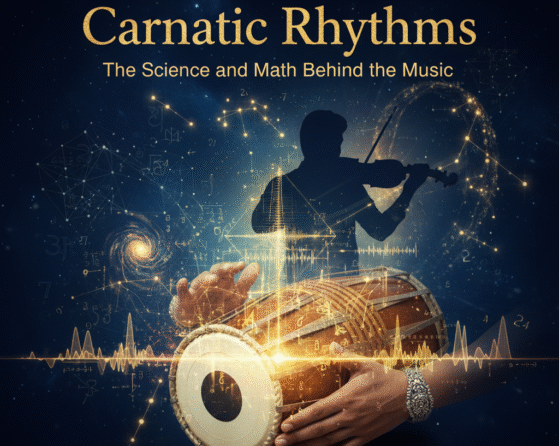Why Do Some Songs Get Stuck in Your Head? The Science of Catchy Music
The Mystery Behind Catchy Music
Have you ever found yourself humming a song repeatedly, even when you were not trying to? If so, you are not alone. This common experience happens because of Catchy Music, which has a unique way of staying in our minds. Whether it is a popular hit, a commercial jingle, or a childhood melody, certain tunes seem impossible to forget. But why does this happen?
In fact, there is a scientific reason behind why some songs are more memorable than others. Because our brains are wired to recognize patterns, they tend to hold onto melodies that are simple, repetitive, and emotionally engaging. Moreover, psychologists refer to these tunes as earworms—songs that play in our heads on a loop, sometimes without warning.
Interestingly, Catchy Music is not just about repetition. Although repeating melodies make songs easier to remember, factors like rhythm, lyrics, and emotional connection also play an important role. While some songs stay with us for a short time, others last for years, creating a lasting impact on our emotions and memories.
So, what exactly makes a song catchy? Why do some tunes stick in our heads, while others disappear quickly? As we explore the science behind Catchy Music, we will discover how our brains process sound, why certain songs remain unforgettable, and how musicians use these techniques to create memorable melodies. 🎶
Why Is Understanding Catchy Music Important?
Music is not just entertainment—it has profound effects on our mood, behavior, and memory. Understanding the science behind Catchy Music can help:
✔️ Songwriters and producers create music that resonates deeply with listeners.
✔️ Brands and advertisers develop jingles that leave lasting impressions.
✔️ Listeners understand why some songs feel so addictive.
✔️ Students and educators use music more effectively for learning and memory enhancement.
This blog will explore the science of catchy music, explaining why some tunes refuse to leave our minds and how we can manage those persistent earworms.
What Is Catchy Music? Understanding the Concept

Definition of Catchy Music
At its core, Catchy Music refers to songs that are easy to remember, engaging, and often involuntarily replay in the mind. These songs usually have:
✔️ Simple but memorable melodies that stick with listeners.
✔️ Repetitive structures that reinforce familiarity.
✔️ Strong rhythmic hooks that make it hard to forget.
✔️ Lyrics with emotional appeal that enhance memory retention.
While many genres can produce Catchy Music, certain characteristics increase a song’s likelihood of becoming an earworm.
What Are Earworms? The Link Between Music and Memory
The term earworm (scientifically called Involuntary Musical Imagery or INMI) describes a song that gets stuck in a person’s head, often replaying without conscious effort. Research suggests that 90% of people experience earworms at least once a week, with some encountering them multiple times a day.
So why do some songs get stuck while others don’t? The answer lies in a mix of musical structure, brain activity, and personal experiences.
✔️ Musical patterns: Repeating loops of melodies and lyrics make a song easier to recall.
✔️ Brain function: The auditory cortex retains and replays familiar sounds, especially ones with strong rhythms.
✔️ Emotional triggers: Songs associated with strong emotions (happy, nostalgic, or even sad) are more likely to stick.
The Science of Catchy Music | Why Do Songs Get Stuck in Your Head?

Why do certain songs seem to cling to our minds like glue? The answer lies in the intricate relationship between music, psychology, and neuroscience.
The Psychology Behind Catchy Music
Psychologists have identified several cognitive processes that explain why songs get stuck in our heads. Some of the most prominent theories include:
1. The Zeigarnik Effect: The Brain’s Need for Closure
One of the biggest psychological reasons Catchy Music stays in our minds is the Zeigarnik Effect. This principle states that the human brain has a tendency to remember incomplete or interrupted tasks better than completed ones.
✔️ When a song has unfinished phrases, the brain keeps replaying it to resolve the pattern.
✔️ This is why choruses, hooks, and repeating loops make a song more likely to become an earworm.
✔️ The constant need for resolution forces the brain to keep replaying the tune, even when we’re not actively listening to it.
For example, the melody of “Someone Like You” by Adele follows a familiar yet slightly unresolved pattern, making it more likely to get stuck.
2. Emotional Connection and Memory Formation
Music is deeply linked to memory and emotions. If a song makes you feel something strong—joy, nostalgia, excitement, or even sadness—your brain holds onto it.
✔️ Songs tied to specific experiences (a graduation, a road trip, a wedding) tend to stay with us longer.
✔️ Musical nostalgia plays a huge role in making tunes feel more memorable over time.
✔️ Lyrics that evoke emotions become easier to recall.
For example, songs like “Bohemian Rhapsody” by Queen or “Yesterday” by The Beatles remain widely remembered because they trigger strong emotional responses.
The Neuroscience of Catchy Music
Our brains process music in multiple ways, involving different areas responsible for sound, memory, and pleasure. Neuroscientists have pinpointed the following reasons why Catchy Music gets embedded in our minds:
1. The Role of the Auditory Cortex
The auditory cortex, the part of the brain responsible for processing sound, gets highly active when listening to repetitive and structured melodies.
✔️ Catchy Music often follows predictable patterns, allowing the brain to anticipate what comes next.
✔️ The auditory cortex holds onto these patterns, making the tune easier to recall involuntarily.
✔️ Even if you hear just a small part of the song later, your brain can recall the entire melody.
2. Dopamine and the Brain’s Reward System
Listening to music triggers the release of dopamine, a neurotransmitter associated with pleasure, reward, and motivation. The catchier the tune, the stronger the dopamine response, reinforcing the brain’s desire to hear it again.
✔️ This explains why people enjoy repeating their favorite songs.
✔️ The more a song stimulates the reward system, the more likely it is to become an earworm.
✔️ Upbeat and high-energy songs tend to have a stronger dopamine release, making them more addictive.
For instance, songs like “Uptown Funk” by Mark Ronson ft. Bruno Mars and “Can’t Stop the Feeling” by Justin Timberlake create strong dopamine surges, making them nearly impossible to forget.
How Catchy Music Is Created | The Key Ingredients

Not all songs have the power to become earworms. Some fade away quickly, while others live on in our heads for years. The secret to Catchy Music lies in a combination of musical structure, repetition, simplicity, and emotional impact.
Musical Elements That Make Catchy Music Stick
1. Repetitive and Predictable Melodies
Repetition is one of the strongest tools in songwriting. Catchy Music often features simple, repetitive melodies that the brain can easily recognize and recall.
✔️ Short and repeating melodic phrases reinforce familiarity.
✔️ Songs with symmetrical structures help the brain anticipate the next note, making them easier to remember.
✔️ Limited note variation allows listeners to pick up the tune quickly.
For example, the melody of “Twinkle, Twinkle, Little Star” is incredibly simple and follows a clear, predictable pattern, which is why even young children remember it.
2. Strong and Addictive Rhythms
A good rhythm plays a vital role in making Catchy Music irresistible. The human brain naturally responds to rhythm, which explains why certain beats make us want to tap our feet, dance, or nod our heads.
✔️ Songs with a steady beat (between 120–140 BPM) often feel more engaging.
✔️ Syncopation (offbeat rhythms) creates tension, making songs stand out.
✔️ Drum-heavy tracks with strong bass lines keep the listener hooked.
For example, “We Will Rock You” by Queen relies purely on a stomp-stomp-clap beat, making it unforgettable.
3. Simple Yet Impactful Lyrics
Lyrics also contribute to a song’s catchiness. Repetition, rhyme, and emotional content make lyrics stick in our minds longer.
✔️ Choruses with repeating phrases create instant recall.
✔️ Rhyme schemes make words flow smoothly, aiding memory.
✔️ Conversational language makes lyrics feel relatable and easy to sing along to.
For example, in “Call Me Maybe” by Carly Rae Jepsen, the chorus repeatedly emphasizes the phrase “Call me, maybe?”, making it nearly impossible to forget.
Why Some Songs Are More Catchy Than Others

Even though thousands of songs are released each year, only a few achieve iconic earworm status. Some songs are designed to be catchier than others based on how they engage the brain.
The Role of Cultural and Personal Preferences
Different people find different songs catchy based on their culture, experiences, and exposure to music.
✔️ Familiarity plays a role—songs that follow well-known structures feel more natural.
✔️ Musical preferences vary—a person who listens to pop music may find pop tunes catchier than classical pieces.
✔️ Emotional connection enhances recall—a song linked to a special event becomes more memorable.
For instance, holiday songs like “Jingle Bells” remain universally catchy because they are repeated every year, making them deeply embedded in people’s memories.
The Impact of the Music Industry on Catchy Music
Music producers and record labels intentionally design songs to be catchy. They use:
✔️ Scientific data to determine which melodies and rhythms perform best.
✔️ Focus groups to test song appeal before release.
✔️ Social media trends to make songs go viral faster.
For example, TikTok trends have led to the success of many catchy songs, as users replay short sound clips repeatedly.
How to Get Rid of an Earworm | Managing Catchy Music in Your Mind

While Catchy Music can be enjoyable, sometimes an earworm becomes too persistent, replaying in your mind for hours or even days. Luckily, researchers have identified ways to stop unwanted songs from looping in your head.
1. Listen to the Song in Full
Surprisingly, the best way to stop an earworm is to listen to the entire song. When the brain remembers only a portion of a song (like the chorus), it tries to complete the missing parts by replaying it over and over.
✔️ Play the full song to give your brain closure.
✔️ Sing along with the lyrics to engage more cognitive functions.
✔️ Focus on the melody’s resolution to break the loop.
2. Distract Your Brain with Another Activity
Engaging in a task that requires deep concentration can help push the unwanted tune out of your mind. Activities such as:
✔️ Solving a puzzle (Sudoku, crosswords, or brain teasers)
✔️ Reading a book (especially one with complex ideas)
✔️ Listening to a different song (preferably something calming)
help shift your brain’s focus.
3. Try a “Cure” Song
Some research suggests that certain songs help remove earworms. Scientists call these “cure songs”, which are non-repetitive, slower-paced tunes that disrupt the mental loop.
Examples of effective “cure” songs include:
✔️ “God Save the Queen” (classical hymn)
✔️ “Happy Birthday” (familiar, yet not overly repetitive)
✔️ “Yesterday” by The Beatles (a slower, emotional tune)
By switching to a different musical pattern, the brain naturally stops playing the previous tune.
Final Thoughts on Catchy Music
The Lasting Power of Catchy Music
Music is not just about entertainment; it plays a significant role in our emotions, memory, and daily experiences. Whenever a song becomes catchy, it tends to stay in our minds for a long time. This phenomenon does not happen by chance. Instead, it is the result of scientific and psychological factors that influence how our brains process sound.
Moreover, Catchy Music is everywhere—on the radio, in commercials, and even on social media. Because of its ability to stay in our heads, it shapes our moods, brings back memories, and even influences our actions. In fact, whether it is a nostalgic tune from childhood or a viral trend from TikTok, the way certain songs become unforgettable is truly fascinating.
Why Catchy Music Remains Popular Over Time
Although some songs fade away quickly, others manage to remain relevant for decades. But what exactly makes the difference?
1️⃣ Cultural Significance – Songs associated with historic moments or trends tend to stay in public memory.
2️⃣ Emotional Connection – If a song makes people feel something, they are more likely to remember it.
3️⃣ Repetition and Exposure – The more often people hear a song, the stronger its impact becomes.
4️⃣ Simplicity and Predictability – Songs with simple, familiar structures are easier to recall.
For instance, hits like “Shape of You” by Ed Sheeran or “Don’t Stop Believin’” by Journey have stayed popular because of their recognizable melodies, emotional lyrics, and memorable choruses.
The Emotional and Psychological Connection
One of the most interesting aspects of Catchy Music is the way it connects to emotions. Since music is linked to memory processing in the brain, we tend to associate songs with specific events in our lives.
✔️ Happy Moments: Songs that remind us of celebrations or exciting times become favorites.
✔️ Emotional Lyrics: If a song expresses deep feelings, people connect with it more strongly.
✔️ Personal Memories: Whenever a song relates to personal experiences, it becomes more meaningful.
As a result, certain songs can make us feel nostalgic, motivated, or even emotional. Because of this strong connection, many people return to the same songs years later, as they remind them of special memories.
How Catchy Music is Used in Marketing and Media
Catchy tunes are not only enjoyable but also highly effective in advertising and entertainment. For that reason, businesses and content creators rely on music to engage audiences.
🎵 Brands use memorable jingles to create strong associations with their products.
🎵 Movies and TV shows feature powerful soundtracks to enhance emotions.
🎵 Social media trends spread quickly because of viral songs.
For example, the famous McDonald’s “I’m Lovin’ It” jingle remains unforgettable because of its simple and repetitive melody. Similarly, songs featured in popular movies, such as Frozen’s “Let It Go,” continue to be recognized worldwide.
Appreciating the Science Behind Catchy Music
Even though earworms can sometimes feel annoying, they actually show how powerful music is in shaping our thoughts and experiences. Instead of fighting them, it is better to embrace the fact that Catchy Music enhances memory, mood, and creativity.
So, the next time you catch yourself humming a song over and over, remember—your brain is simply recognizing patterns, recalling familiar sounds, and responding to the magic of music. 🎶
Would you like any further refinements? 🚀
Want to explore more fascinating insights about music? Check out and browse through our collection of exciting music-related blogs. From the science of melodies to tips on mastering your favorite instrument, we cover it all. Stay tuned for more engaging musical content!
For more information and exciting resources about learning music, visit our website at The Mystic Keys. For more music content and exciting offers follow us on
Facebook, Instagram, YouTube, LinkedIn, Twitter, Pinterest, Reddit, Threads, and Quora.








